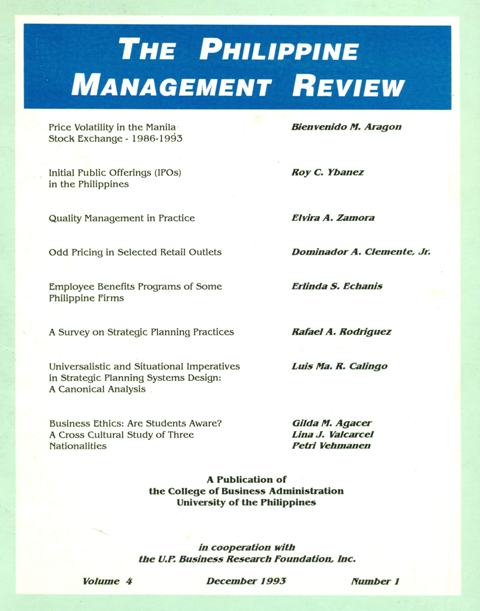Initial Public Offerings (IPOs) in the Philippines
Abstract
The study reviews the performance of 43 of 44 Philippine IPOs undertaken in the period 1989-1993, and explores various issues surrounding the observed rates of return. IPOs of common stock are found to have significant excess returns on listing day. The mean raw return of 32 actively traded IPOs is 42.1 percent resulting in an excess returns on listing day. The mean raw return of 32 actively traded IPOs is 42.1 percent resulting in an excess return of 40.0 percent. The high returns may be the result of a speculative bubble or fad on listing day, but the hypothesis that the aftermarket is efficient cannot be rejected. Rate of return patterns in the aftermarket up to the first year of trading suggest an efficient market. The study discounts the possibility that the high return is solely a premium for greater systematic risk. A large number of IPOs was thinly traded in their first year, suggesting that the excess return might consist of a liquidity premium. Small IPOs are potentially less liquid but there is no correlation observed between excess returns and the size of the offering or market capitalization. Taxes, transactions and search costs in the local exchange are not likely to command high premiums. The results point to the possibility that IPOs are generally underpriced during the offering period. This raises questions about the responsibilities of underwriters and corporate managers of the issuing companies to their shareholders.
